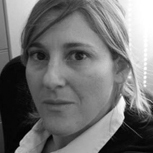The global demand for seaweed biomass is rising. According to recent figures from the FAO (2014), about 25 million tonnes of seaweeds and other algae are utilized annually: used as food, in cosmetics and fertilizers; or processed to extract thickening agents for the food industry and additives to animal feed. This volume has increased by more than 30% since the previous estimates (2012), demonstrating a swelling global interest in the marine bioresources. On the other hand, the large companies using algae in their products require a regular and reliable supply of the material, in terms of both quantity and quality. This is a problem when suppliers are small producers, located in different geographical regions and offering products with varying characteristics, due to both different production practices and natural variability of environmental conditions.
These issues, as well as sustainability concerns for our natural resources, can largely be addressed by adopting seaweed aquaculture over wild harvesting. From the west coast of Ireland to Indonesia, and on to Eastern Canada, the rural communities of the coastal areas of the world, who have harvested their seaweed for centuries, are now adopting a more reliable and sustainable approach, through cultivation. It is therefore not surprising that the biomass marketed through these practices covers as much as 95% of the global commerce, for a value of $6.4 billion (FAO, 2014).
Nuclear pollution of marine waters in areas of high production, such as Japan, and concerns related to the uncertain quality standards of other major producing countries in Asia, such as China, are bringing customers in large numbers at the doorstep of Europe, where stringent regulations, at the European and national level, are forcing even the smallest of our producers to comply with very high quality standards for the use of natural ingredients in products intended for human consumption or our environment.
This unsought large attention is providing a real development opportunity for the coastal areas of Western Europe, where a pristine marine environment and heritage practices of sustainable seaweed utilisation are combining with purposely-deployed scientific capacity. As demonstrated during the small workshop held in the northwest periphery of Europe, this synergy is providing novel solutions for the whole value chain of the sector, from improved cultivation and harvesting techniques to continuously pushing the field of application’s boundaries further afar.
Unleashing the development potential of this marine economy sector, the second most important marine harvest after fisheries, urgently requires bringing the small producers to understand the needs of the bigger industry. The presence of scientists in the very backbone of our production lines is a very encouraging sign for the sustainability and reliability of the sector and a very dignified salute to the European Blue Growth agenda.


